


|
520-419-1424 |
|
Steve Rhine |


|
Rhine Inspections |

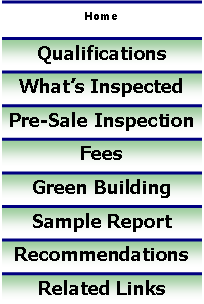
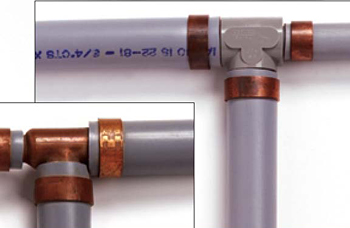
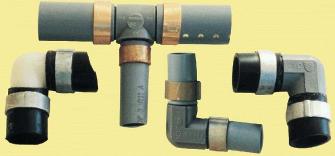
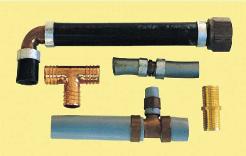
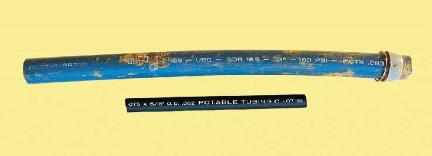

|
Pictures of various types/uses of polybutylene |
|
Exterior Piping |
|
Interior Fittings |
|
Original Interior Fittings |
|
Interior Fittings with copper clamp rings |

|
Polybutylene is a form of plastic resin that was used extensively in the manufacture of water supply piping from 1978 until 1995. It is most commonly found in the "Sun Belt" where residential construction was heavy through the 1980's and early-to-mid 90's.The piping systems were used for underground water mains and as interior water distribution piping. Industry experts believe it was installed in at least 6 million homes, and some experts indicate it may have been used in as many as 10 million homes. Most probably, the piping was installed in about one in every four or five homes built during the years in which the pipe was manufactured. Polybutylene has been sold under the popular trade names Qest, Thermoguard and Flex-Temp. Polybutylene pipe is a plastic plumbing product manufactured from plastic resin supplied by Shell Oil Company By the late 1980s, a number of PB plumbing systems began to experience problems with leaky fittings. There have been a number of class action lawsuits against the manufacturers as well as the installers. One of the largest (Cox v. Shell Oil Co., et al) has been settled for $950 million – the deadline for filing a claim was August 20, 1999. As of April 1996, the Shell Chemical Co. no longer supplied polybutylene resin for pipe applications in the U.S. With other class action lawsuits (Qest, Vanguard), a claim must be made within 13 years [with acetal fittings] or 16 years [with metal fittings] after the date of installation or before May 1, 2009, whichever comes first How to Tell If You Have Polybutylene Piping Exterior - Polybutylene underground water mains are usually blue, but may be gray or black (do not confuse black poly with polyethelene pipe). It is usually 1/2" or 1" in diameter, and it may be found entering your home through the basement wall or floor, concrete slab or coming up through your crawlspace; frequently it enters the home near the water heater. Your main shutoff valve is attached to the end of the water main. Also, you should check at the water meter that is located at the street, near the city water main. It is wise to check at both ends of the pipe because cases have been found where copper pipe enters the home, and poly pipe is at the water meter. Obviously, both pipes were used and connected somewhere underground. Interior - Polybutylene used inside your home can be found near the water heater, running across the ceiling in unfinished basements, and coming out of the walls to feed sinks and toilets. Warning: In some regions of the country plumbers used copper "stub outs" where the pipe exits a wall to feed a fixture, so seeing copper here does not mean that you do not have polybutylene
|
|
“Not every PB system leaks, but the material is susceptible to corrosion when it comes into contact with chlorinated water, resulting in breakage and splitting of PB piping.” |
|
“In some cases, homeowners are finding that homeowners insurance companies will either cancel their coverage when extensive damage is caused by polybutylene or refuse coverage to homes piped with PB.” |